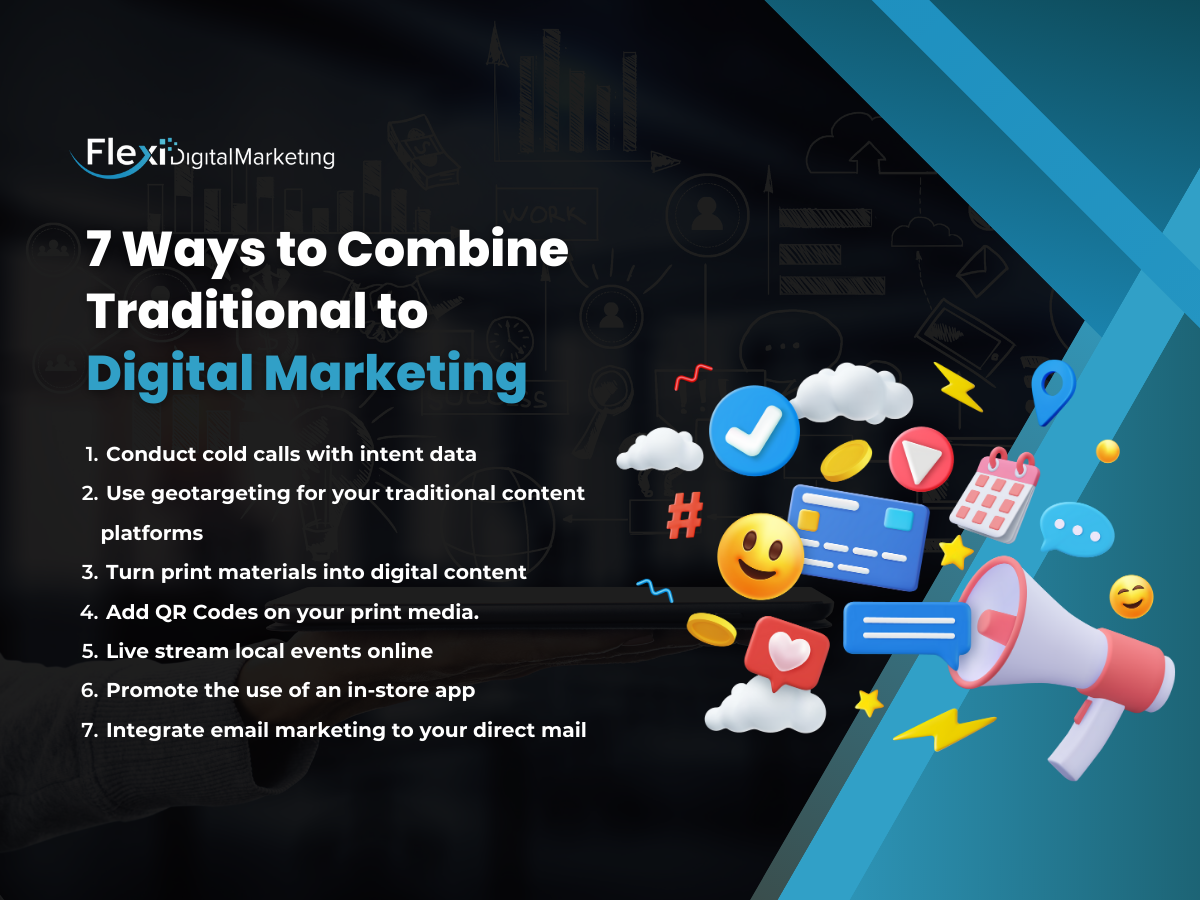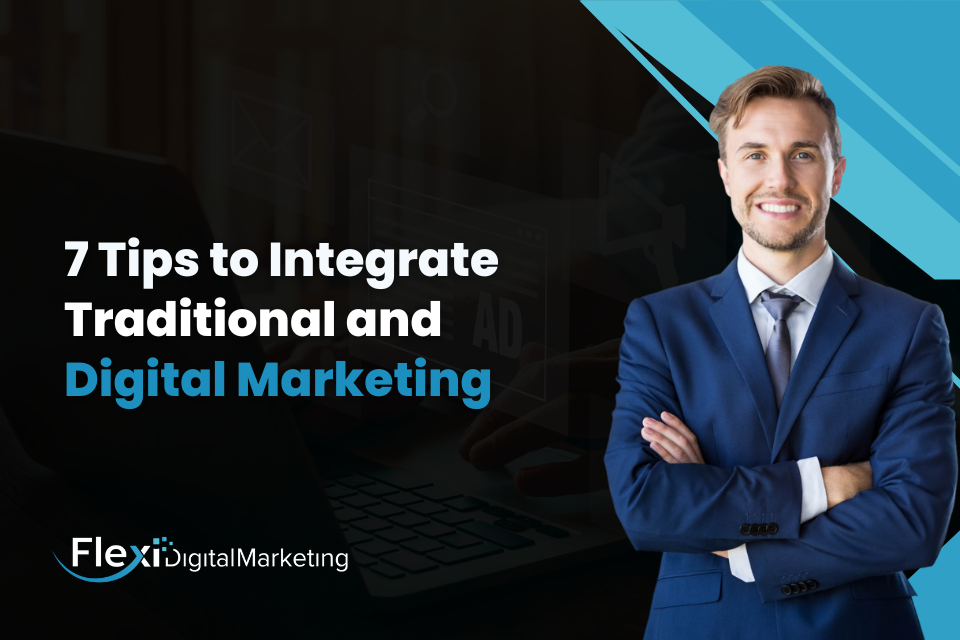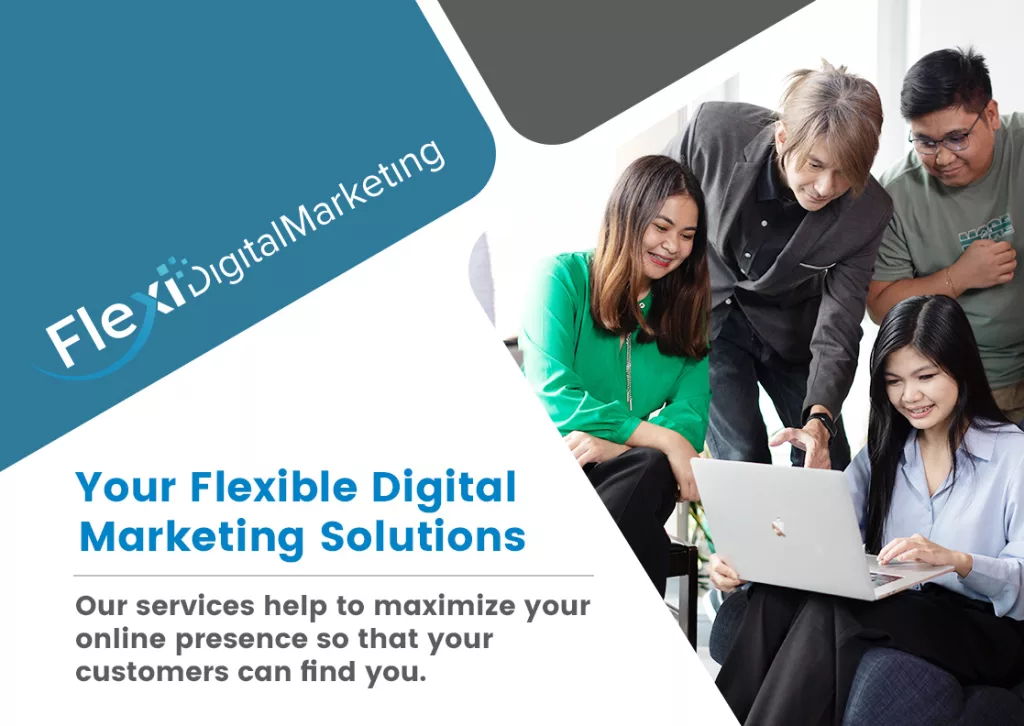In today's rapidly evolving marketing landscape, balancing traditional and digital marketing strategies is critical to driving business success. While traditional marketing methods like print advertisements, direct mail, and event sponsorships still hold value, digital marketing has emerged as a powerful force, leveraging online platforms, social media, and data-driven techniques.
But how can businesses effectively integrate these two seemingly distinct approaches to create a cohesive and impactful marketing strategy?
This article will explore seven valuable tips to help you seamlessly integrate traditional and digital marketing efforts. From bridging the gap between print and online channels to leveraging data-driven insights for targeted campaigns, these tips will empower you to navigate the evolving marketing landscape and achieve the best of both worlds.
So, let's dive in and discover how you can successfully integrate traditional and digital marketing to propel your business forward.
Traditional Marketing Vs. Digital Marketing: What's the Difference?
Traditional and digital marketing are two distinct approaches to reaching and engaging with an audience. While traditional marketing has been businesses' longstanding method, digital marketing has emerged as a powerful alternative in the age of technology and connectivity.
Here is the difference between the two:
Traditional Marketing
Traditional marketing refers to the conventional methods and channels businesses used to promote their products or services before the rise of digital technologies. It encompasses various offline advertising, and promotional tactics practiced for many years, including print, broadcast, outdoor, events, telemarketing, and direct mail advertising.
Likewise, this marketing scheme has traditionally focused on reaching a broad audience through mass media channels. While it lacks the targeting precision and real-time measurement capabilities of digital marketing, it has been a trusted and effective method for many businesses.
To differentiate it from digital marketing, here are some of the scopes of traditional marketing:
- Reach and target. Traditional marketing usually relies on offline channels such as television, print media, billboards, mail, and radio. Unlike digital marketing, this type usually reaches a broad audience without specific targeting capabilities.
- Traditional marketing can involve high expenses due to materials, airtime, logistics, and distribution expenses.
- Measurement and Analytics. Measuring the impact of traditional marketing can be challenging. It relies on estimates, surveys, and anecdotal evidence to gauge effectiveness.
- Customer Engagement. Traditional marketing is a one-way communication channel where businesses deliver messages to the audience without immediate interaction or engagement.
- Traditional marketing campaigns often require significant planning and lead time. Changes or adjustments can be time-consuming and costly.
Digital Marketing
Digital marketing uses channels, platforms, and technologies to promote products, services, and brands to a targeted audience. It encompasses various online marketing tactics such as search engine optimisation (SEO), pay-per-click (PPC), Social Media Marketing, Email Marketing, Content Marketing, and more. This marketing type is usually aimed at driving customer engagement, generating leads, and, ultimately, achieving business growth.
It is well known that digital marketing offers numerous advantages over traditional marketing, including precise audience targeting, real-time data and insights, cost-effectiveness, interactivity, and the ability to measure and optimise campaigns for maximum impact.
Let's take a look at its features.
- Reach and target. Digital marketing offers precise targeting options, allowing businesses to reach specific demographics, interests, and behaviours.
- Digital marketing offers a range of cost-effective options, including PPC advertising, where businesses only pay when their ads are clicked. Likewise, most digital marketing channels are free, and various tools are available online.
- Measurement and Analytics. Digital marketing provides robust analytics tools that offer real-time data and insights. Marketers can track website traffic, conversion rates, engagement, and ROI metrics, enabling them to make data-driven decisions and optimise campaigns accordingly.
- Customer Engagement. Digital marketing encourages two-way communication between businesses and their audience. Social media platforms, email campaigns, and interactive website features allow for direct engagement, feedback, and customer dialogue.
- Digital marketing campaigns can be quickly modified and adjusted in real time. Marketers can respond promptly to audience feedback, optimise campaigns, and experiment with strategies to achieve the desired results.
7 Ways to Combine Traditional and Digital Marketing
In today's digital era, businesses must carefully consider traditional and digital marketing approaches. While conventional marketing holds value in specific contexts, digital marketing offers unparalleled targeting capabilities, cost-effectiveness, measurement precision, interactivity, and agility. A well-rounded marketing strategy often incorporates a blend of both approaches to leverage the unique strengths of each and reach a wider audience effectively.
Here are some tips for integrating traditional and digital marketing:

1. Conduct cold calls with intent data
Cold calling, the practice of reaching out to potential customers by phone without any prior contact or relationship, has been a longstanding sales technique. However, its effectiveness has evolved with changing consumer behaviours and preferences. Consumers today are more empowered and can access much information about products and services. They prefer to research and make informed decisions on their terms rather than being interrupted by unsolicited calls.
Intent data can be a valuable tool to enhance the effectiveness of cold calling by providing insights into the interests and behaviours of potential customers. By leveraging these data, businesses can better understand the preferences of their target audience, allowing them to tailor their cold-calling efforts and make them more relevant and impactful.
2. Use geotargeting for your traditional content platforms
Another way to integrate traditional and digital marketing is through geotargeting. Geotargeting is a digital marketing trend involving delivering specific content, advertisements, or promotions to individuals based on location. It utilises location data, such as GPS coordinates, IP addresses, or zip codes, to determine the user's location and deliver relevant marketing messages.
With geotargeting, you can tailor your print advertisements to specific regions or locations. You can create targeted campaigns that resonate with local preferences, interests, or events by identifying the target audience's location. For example, a retailer can display location-specific promotions on digital billboards in areas with a higher concentration of their target customers.
Likewise, Geotargeting allows you to offer location-specific promotions or discounts to incentivise customers. Using mobile devices or in-store apps, you can send targeted notifications to users when they are near your physical store. This encourages foot traffic, drives impulse purchases, and enhances the customer experience.
3. Turn print materials into digital content
One powerful approach to integrating traditional into digital marketing is through print materials. Traditional print materials often have limitations when it comes to interactivity and engagement. But by digitizing your print materials, such as brochures, catalogues, or magazines, you make them easily accessible to a broader audience.
Likewise, once you digitalised your materials, you can incorporate interactive elements such as videos, animations, infographics, and quizzes. These elements capture attention, enhance user experience, and make your marketing messages memorable. Users can actively engage with your content, leading to a deeper connection with your brand and a higher likelihood of conversion.
4. Add QR Codes on your print media.
QR codes on print media are a powerful bridge to integrating traditional into digital marketing. QR codes allow customers to easily transition from offline to online experiences. By scanning a QR code printed on a brochure, flyer, poster, or any other print material, users are instantly directed to a specific digital destination, such as a website, landing page, or social media profile. This enables businesses to engage with customers through multiple channels, combining the visual appeal of print media with the interactive and dynamic nature of digital platforms.
By seamlessly connecting print media to digital platforms, businesses can drive conversions by guiding users through a customer journey that includes awareness, interest, consideration, and purchase. For example, a QR code on a product package can lead customers to an online checkout page, facilitating a direct conversion opportunity.
5. Live stream local events online
You can also integrate traditional into digital marketing through live streaming real-life events online. It allows you to transcend geographical limitations and reach a broader audience beyond those physically present at the event. As such, you can attract virtual attendees from different locations who may not have been able to attend in person. This extends the reach of your event and opens up new opportunities to engage with a broader audience.
In addition, live stream adds valuable digital content that can be repurposed for marketing materials. You can make snippets, highlights, and articles about the event and share them across various digital channels.
6. Promote the use of an in-store app
Another way to integrate traditional into digital marketing is by promoting in-store applications. An in-store app can significantly incorporate traditional and digital marketing efforts by seamlessly connecting the physical retail environment with digital experiences.
It can offer features such as product information, recommendations, reviews, and promotions, creating a digital layer that complements the traditional retail experience. Customers can access additional content, view product details, and make informed purchasing decisions. This results in a more engaged and empowered shopping experience.
Likewise, an in-store app can incorporate loyalty programs, allowing customers to earn points, receive exclusive offers, and enjoy personalised rewards. Businesses can track customer behaviour, gather insights, and incentivise repeat purchases by digitizing loyalty programs. This data can be used to refine marketing strategies, create targeted campaigns, and drive customer retention and advocacy.
7. Integrate email marketing into your direct mail
Combining direct mail and email marketing is an effective way to integrate traditional and digital marketing strategies. You can do this by reinforcing your direct mail with email follow-up. When you send your personalised direct mail to your target audience, you should encourage recipients to visit a specific landing page or website to access information or claim an offer.
Once you have captured the recipients' email addresses, set up email follow-up sequences to nurture and engage them further. Send automated emails that align with the content of the direct mail piece they received.
This creates a consistent and cohesive customer journey, reinforcing the message and driving them toward conversion or further engagement. Personalise the email content based on the recipient's interests, preferences, or actions on the website or landing page.
Consult Your Marketing Need with Flexi Digital!
In summary, combining traditional and digital marketing, you can maximise your reach, engage with your target audience, and more! This integration opens up new avenues for your business to connect with potential customers and stay ahead in today's dynamic marketing landscape.
So, do not be afraid to combine these two marketing methods. And if you need further help, Flexi Digital Marketing can help you! Tell us about your business. Consult with us today!


